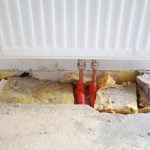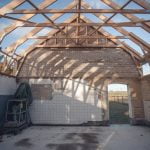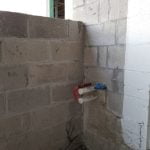Are you wondering, “Can you deduct home improvements in 2018?” Homeowners who have made upgrades or renovations to their properties may be eligible for certain tax deductions. Understanding the tax laws and regulations surrounding home improvements is crucial in maximizing potential benefits. This article will delve into the specifics of deducting home improvement expenses in 2018, outlining what qualifies, how to keep track of expenses, limits and restrictions, potential tax benefits, common mistakes to avoid, and real-life examples.
When it comes to deducting home improvements on your taxes, it’s essential to have a clear grasp of the rules set forth by the IRS. Differentiating between repairs and improvements can impact your eligibility for deductions. By knowing what qualifies as a deductible home improvement expense, homeowners can ensure they are accurately reporting their expenses and potentially lowering their taxable income.
Keeping meticulous records of expenses related to home improvements is key to successfully claiming deductions. From receipts and invoices to contracts and project details, maintaining organized documentation can simplify the process come tax season. Additionally, understanding any limits or restrictions on deducting home improvements can prevent miscalculations and errors on your tax return. Stay informed about potential tax benefits associated with these deductions to make informed decisions about investing in your property.
Understanding the Tax Laws and Regulations for Home Improvements
When it comes to understanding the tax laws and regulations for home improvements in 2018, homeowners need to be aware of what expenses can be deducted. Generally, the Internal Revenue Service (IRS) considers home improvements as non-deductible personal expenses. However, there are certain situations where specific home improvement costs may qualify for tax deductions.
For instance, if a home improvement project is considered as a medical necessity, such as adding wheelchair ramps or making other modifications for medical reasons, these expenses can potentially be deductible. Additionally, certain energy-efficient upgrades like installing solar panels or energy-efficient windows can also qualify for tax credits under the Residential Energy Efficient Property Credit.
It’s important for homeowners to keep in mind that not all home improvement expenses can be deducted on their taxes. Only specific qualifying improvements that meet IRS criteria will be eligible for deductions or credits. Therefore, consulting with a tax professional or accountant can help clarify which home improvement expenses can you deduct home improvements in 2018 accurately and ensure compliance with IRS regulations.
| Qualifying Home Improvements | Potentially Deductible Expenses |
|---|---|
| Energy-Efficient Upgrades (solar panels, windows) | In certain cases, these upgrades may be deductible. |
| Medical Necessity Modifications (wheelchair ramps) | If deemed medically necessary, these costs could be deductible. |
What Qualifies as a Deductible Home Improvement Expense
When it comes to deducting home improvements in 2018, it is essential to understand what qualifies as a deductible expense. Generally, home improvements that add value to your property can be considered deductible. This includes renovations, repairs, and additions that enhance the overall quality or increase the worth of your home. However, routine maintenance and repairs that are necessary to maintain the property in good condition may not be eligible for a tax deduction.
One key consideration is whether the home improvement is classified as a capital improvement or a repair. Capital improvements typically involve significant upgrades that prolong the life of the property, such as installing a new roof or remodeling a kitchen. On the other hand, repairs are considered regular maintenance tasks that are necessary to keep the property in good working order, like fixing a leaky faucet or replacing broken tiles. Only capital improvements are usually eligible for tax deductions.
To determine if you can deduct a specific home improvement expense in 2018, it is advisable to consult with a tax professional or refer to the Internal Revenue Service (IRS) guidelines. The IRS provides detailed information on what constitutes a qualified deduction for home improvements and any specific criteria that need to be met. Keeping accurate records of all expenses related to home improvements is crucial to support your deduction claims and ensure compliance with tax laws and regulations.
| Key Considerations | Details |
|---|---|
| Types of Home Improvements | Repairs vs. Capital Improvements |
| Consultation | Seeking advice from tax professionals or IRS guidelines |
| Record-Keeping | Maintaining accurate expense records |
How to Keep Track of Expenses for Home Improvements
When it comes to deducting home improvements in 2018, keeping track of expenses is crucial to ensure that you can maximize your tax benefits. By maintaining a detailed record of all costs associated with the home improvements, you can easily verify your deductions and provide supporting documentation if needed. One way to do this is by creating a dedicated folder or digital file where you store all receipts, invoices, and contracts related to the improvements.
Utilize a Home Improvement Expense Worksheet
Using a home improvement expense worksheet can help you categorize and organize your expenses efficiently. This tool can be particularly useful for calculating the total amount spent on various projects throughout the year. Make sure to include details such as the date of purchase, description of the work done, name of the contractor or supplier, and total cost. This systematic approach
Consider Using Financial Apps or Software
In addition to manual record-keeping methods, consider utilizing financial apps or software that specialize in tracking expenses. These tools can help streamline the process by automatically categorizing expenses, generating reports, and storing digital copies of receipts. By leveraging technology in this way, homeowners
Limits and Restrictions on Deducting Home Improvements
When it comes to deducting home improvements in 2018, there are certain limits and restrictions that taxpayers need to be aware of. Understanding these constraints can help homeowners make informed decisions about their tax deductions and avoid any potential issues with the IRS. Here are some key points to keep in mind:
1. Deduction Limits: The IRS has specific rules regarding the amount of home improvement expenses that can be deducted in a given tax year. In general, only the costs that increase the value of your home or prolong its useful life can be deducted. Cosmetic enhancements, such as painting or landscaping, typically do not qualify for a deduction.
2. Primary Residence Requirement: To deduct home improvement expenses, the property must be your primary residence. This means that expenses incurred on a vacation home or rental property may not be eligible for a tax deduction.
3. Timing of Deductions: Home improvement expenses are typically deducted over time through depreciation rather than in one lump sum. It’s important to keep detailed records of all expenses and consult with a tax professional to determine the best way to claim deductions over multiple years.
4. Alternative Minimum Tax (AMT): Some taxpayers may be subject to the AMT, which could limit their ability to deduct certain home improvement expenses. It’s crucial to understand how the AMT affects your overall tax liability before claiming any deductions.
While deducting home improvements in 2018 can provide financial benefits for homeowners, it’s essential to navigate these limits and restrictions carefully. By following the guidelines set forth by the IRS and keeping accurate records of all expenses, taxpayers can maximize their deductions while staying compliant with tax laws and regulations. Consulting with a tax professional can also provide additional guidance on how to optimize deductions within the confines of these limits and restrictions”.
Potential Tax Benefits of Deducting Home Improvements in 2018
When it comes to potential tax benefits of deducting home improvements in 2018, homeowners may be able to leverage certain opportunities to reduce their tax liability. Here are some key points to consider:
- Home Office Deduction: If you use a portion of your home exclusively for business purposes, you may be eligible for a home office deduction. This can include expenses related to improvements made to that specific area of your home.
- Energy Efficiency Tax Credits: Making energy-efficient upgrades to your home, such as installing solar panels or energy-efficient windows, can qualify you for tax credits. These credits can directly reduce your tax bill, providing significant savings.
- Medical Improvements Deduction: Certain home improvements that are made for medical reasons and prescribed by a doctor can also be deductible. This includes modifications like ramps, wider doorways, and other accessibility features.
Additionally, the Tax Cuts and Jobs Act of 2017 made some changes to the rules governing deductible home improvements. While certain deductions have been limited or eliminated, there are still opportunities for homeowners to benefit from making qualified home improvements. It is crucial for homeowners to stay informed about the latest tax laws and regulations that may impact their ability to deduct home improvement expenses.
Ultimately, taking advantage of potential tax benefits by deducting home improvements in 2018 requires careful planning and documentation. Keeping detailed records of all expenses related to the improvements, including receipts, invoices, and contracts, is essential in order to support any deductions on your tax return.
Consult with a tax professional or accountant if you are unsure about the eligibility of specific expenses for deduction purposes. By understanding the tax implications and maximizing available deductions, homeowners can potentially save money while improving their living space.
Common Mistakes to Avoid When Deducting Home Improvements
When it comes to deducting home improvements in 2018, there are some common mistakes that homeowners should be aware of to ensure they maximize their tax benefits while staying compliant with IRS regulations. One of the biggest mistakes to avoid is incorrectly categorizing a repair as an improvement.
The IRS defines a repair as something that maintains your home in good condition, while an improvement adds value to your property. It’s crucial to distinguish between the two categories as only home improvements can be deducted.
Not Keeping Proper Documentation
Another common mistake homeowners make when deducting home improvements is failing to keep accurate records of their expenses. Without proper documentation, such as receipts, invoices, and contracts, it can be challenging to prove the legitimacy of your deductions in case of an audit. Homeowners should maintain a detailed record of all costs related to their home improvements, including labor costs and materials purchased.
Overestimating Deductible Expenses
Some homeowners may overestimate the amount they can deduct for their home improvements in 2018. It’s essential to understand the limitations and restrictions set by the IRS regarding deductible expenses. For example, not all home improvements are eligible for deductions, and there are thresholds on the amount that can be claimed. It’s crucial to consult with a tax professional or refer directly to IRS guidelines to determine what expenses qualify for deductions and at what limits.
Examples and Case Studies of Successfully Deducting Home Improvements
When it comes to deducting home improvements in 2018, understanding the tax laws and regulations is crucial to ensure that you comply with the rules set by the Internal Revenue Service (IRS). Qualifying for deductions on home improvement expenses can provide homeowners with potential tax benefits.
Generally, expenses that increase the value of your home, prolong its life, or adapt it to new uses may be eligible for deductions. However, it is essential to keep track of all expenses related to home improvements to accurately report them on your tax return.
One key aspect to consider when deducting home improvements is the distinction between repairs and improvements. While repairs are generally not deductible, improvements that add value to your property may be eligible for deductions. For example, renovating a kitchen or bathroom can enhance the value of your home and potentially qualify as a deductible expense. Keeping detailed records of these improvement projects, including receipts and invoices, can help support your deduction claims in case of an audit.
Homeowners should also be aware of limits and restrictions when deducting home improvements in 2018. The Tax Cuts and Jobs Act (TCJA) implemented changes that may affect the deductibility of certain home improvement expenses. Understanding these limits can help you maximize your deductions while staying within legal boundaries. Consulting with a qualified tax professional can provide guidance on navigating these regulations and optimizing your tax benefits when deducting home improvements in 2018.
Conclusion and Key Takeaways for Homeowners Deducting Home Improvements in 8
In conclusion, homeowners can indeed deduct certain home improvement expenses on their taxes in 2018, but it is crucial to understand the tax laws and regulations surrounding these deductions. By keeping track of all expenses related to eligible improvements and understanding what qualifies as deductible, individuals can potentially benefit from reducing their taxable income. It is important to note that there are limits and restrictions on deducting home improvements, so consulting with a tax professional or accountant would be advisable.
By taking advantage of deductions for home improvements, homeowners may enjoy potential tax benefits such as lowering their overall tax liability. However, it is essential to avoid common mistakes when deducting these expenses, such as incorrectly categorizing non-qualifying improvements or failing to keep proper documentation. Learning from examples and case studies of successfully deducted home improvements can provide valuable insights for homeowners looking to maximize their tax savings.
In essence, while deducting home improvements in 2018 can offer financial advantages, it requires careful planning, accurate record-keeping, and compliance with IRS guidelines. Homeowners should stay informed about any updates or changes in tax laws that may affect deductibility and seek professional advice if needed. By following the key takeaways outlined in this article, individuals can navigate the process of deducting home improvement expenses effectively and potentially enjoy savings on their taxes.
Frequently Asked Questions
What Home Improvements Are Tax Deductible IRS?
Home improvements that are tax deductible according to the IRS typically include those that increase the value of the property, such as energy-efficient upgrades or renovations for medical purposes. These deductions can help homeowners save money on their taxes.
Are Home Remodeling Costs Tax Deductible?
Generally, home remodeling costs are not tax deductible unless they qualify as a capital improvement. Capital improvements must add value to your home, prolong its life, or adapt it to new uses. Regular repairs and maintenance expenses do not qualify for tax deductions.
Are Improvements to Home Office Tax Deductible?
Improvements made to a home office may be tax deductible if it meets certain criteria set by the IRS. The space must be used regularly and exclusively for business purposes, such as being the primary location where you conduct administrative or management activities. Deductions can include a percentage of utilities, mortgage interest, and depreciation related to the home office.

I’m thrilled to have you here as a part of the Remodeling Top community. This is where my journey as an architect and remodeling enthusiast intersects with your passion for transforming houses into dream homes.





